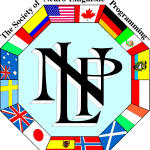Public Speaking Tips

You might be quite often in position to speak to different audiences. As a leader you intend to influence them so they take action that will result at some point in meeting the strategic intents of your enterprise. I thought to share with you some proven strategies that I myself learnt from others (great further resource: Owen Fitzpatrick). They will help you to take your rhetorical competence to the next level so that you will persuade even more people. They are used regularly by Barack Obama, one of the best speakers today…
The Power of Influence and Seduction

In our coaching practice we receive a lot of questions about the power of influence and seduction. Well, let me be clear about that, the power of influence and seduction is never to be about to underestimate. From birth on we start to flirt around the world and influence by yelling and screaming when we need food, drink or other things. At that very moment we are not aware how we do it, but we manage to do it. We do know precisely how to tune in to mom and dad to get the things done at the frequency they act the fastest. At a sudden, as a grown up, we start to think all kinds of things with the goal we want to achieve. Troubling the outcome big-time. This article is about the twofold, influencing and seducing from the power within.
NLP Phonological Ambiguity

In NLP Phonological Ambiguity is best described as words that sound the same but have a different meaning. Utilising Phonological Ambiguities forces the brain to think for a moment. It needs to interpret the context of the sentence and place the ambiguity of the Phonological Ambiguity in the right context. As a result the sender of the message made the receiver of it think for a second or so. Take the following example sentence: “I watch you which maybe is a good thing.”. Several things happen in this sentence. Let’s do a little bit of dissecting this sentence. I can be Eye. Watch can be looking or relate to a clock. Which can relate to a Choice or a Female Wizard.
NLP Punctuation Ambiguity

In NLP Punctuation Ambiguity or Siamese Sentences is part of the Milton Model. Punctuation Ambiguity is a bit harder to detect than the previous sets in the Indirect Elicitation Patterns. Punctuation ambiguity is identified as where you use a sequence of words which is the result of an overlap of two well-formed Surface Structures sentences sharing a word or phrase. In other words, take two sentences, one that ends with the same word as the second sentence begins. For example sentence one: “I want you to notice your hand” and sentence two: “Hand me the glass”. Now comes the trick. Make sentence one and two as one sentence and remove the “Hand” from the second sentence. You will get “I want you to notice your hand me the glass”. Simple right?!
Responsible use of the Meta Model

Responsible use of the Meta Model is one of the foundations we learn people in our Trainings. As NLP as a technology constantly develops and evolves, we constantly update our knowledge by training at least once a year directly with the Society of NLP. It is critical to know the difference between asking questions to clarify your own understanding of someone else’s model, and asking questions to challenge their model. Even if I do, I always want to know when I have moved from one to another. Even if the line seems very gray, you can tell when you have made this shift. One mode is purely about gathering information and your subject will sense this. The other mode is about expanding and challenging their model of the world and this can be confrontational.
Gathering Information (Deletion)

Gathering Information is the First part of the Inverse of the Meta Model. Remember that the Meta Model is used to recover Deleted information. Here we are going to discover the Four parts it is been made of. Now in the Meta Model we learned to ask the questions to discover what has been deleted by the client. In the Milton Model we, as the NLP Practitioner, we are utilizing to deliberately delete information and provide suggestions with it. This part, Gathering Information, is the most useful and most powerful of the three chunks of information. So study it closely, in the end it will make the utilization of the Milton Model only easier.
Nominalizations

Words that take the place of a noun in a sentence but are not tangible are Nominalizations. They can not be touched, felt or heard. Nominalizations are used as nouns but they are actually process words.When you use a Nominalization, a large part of information is deleted. Nominalizations come very helpful in hypnosis and hypnotic inductions. They allow you to be vague and require the listener to search trough their experience for the most applicable meaning. By using Nominalizations you can give useful instructions and being protected at the same time of saying something that will violate or runs counter to the listener’s internal experience.
Causal Modeling or Linkage

Causal Modeling or Linkage is the simple technique of implying that there is a cause-effect relationship between something that is happening and something the coach wants to happen. It invites the client to respond as if one thing happened and indeed caused the other.
NLP Strategies

NLP Strategies – Let’s start with NLP first. NLP is a meta discipline. That is, it is a discipline of disciplines. It is the study of the structure of subjective experience and what can be calculated from that. Now a strategy is a high level plan to achieve one or more goals under certain conditions. For example, the specific strategy is traveling trough at least two representational systems. To remind you, the Representational System consists out of our Five Senses. Visual, Auditory, Kinesthetic, Olfactory and Gustatory. Combining these two we come to NLP strategies. For example: You have learnt in our NLP Practitioner to use your five senses, to generate and maintain rapport. All useful tools to execute a strategy.
Unspecified Verbs

Words like move, change, fix, do, experience are Unspecified Verbs. Now keep in mind that no verb is completely specified. Yet verbs can be more or less specified. When you use relatively unspecified verbs, your client is again forced to provide meaning in order to interpret the sentence. Remember that we are in the land of the Milton Model and the usage of this technique is to be specifically vague. So Unspecified Verbs are fully in line here as they offer only a vague description of an action or happening.


